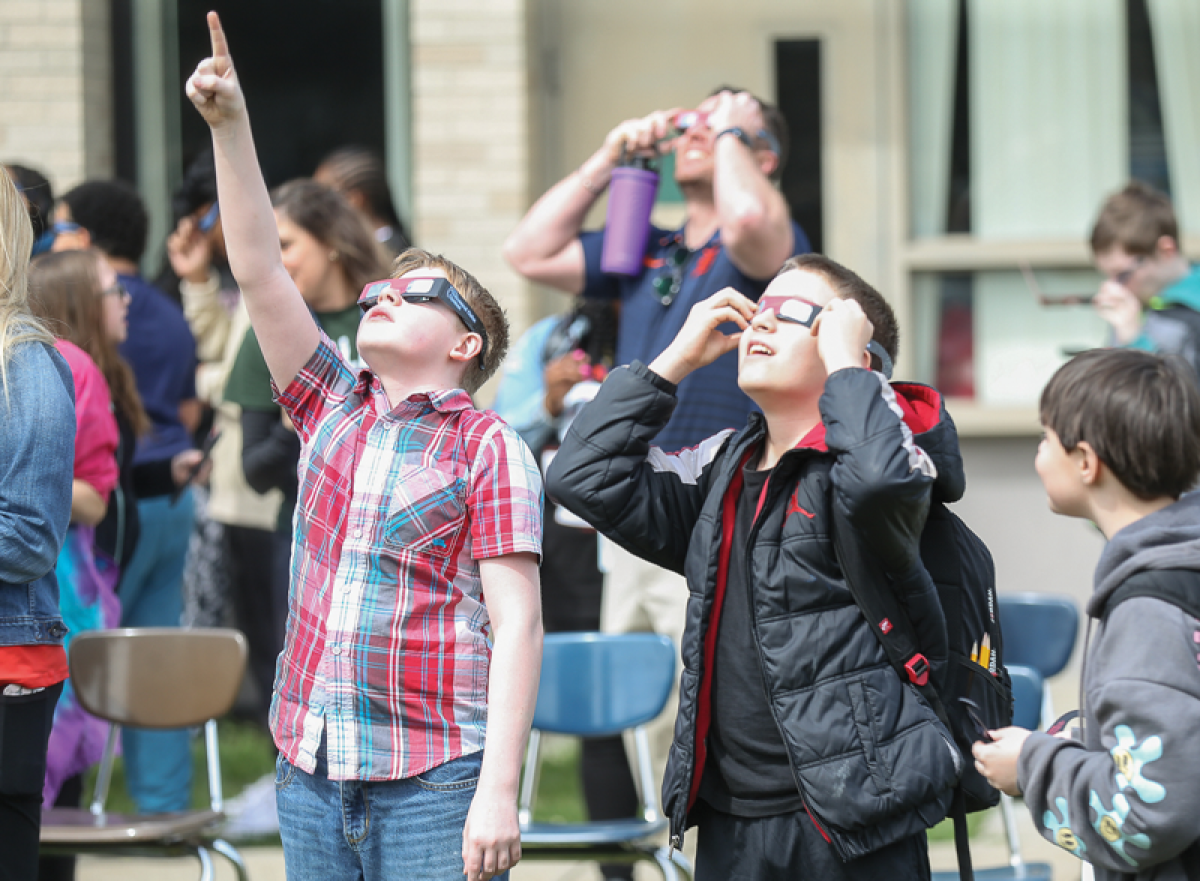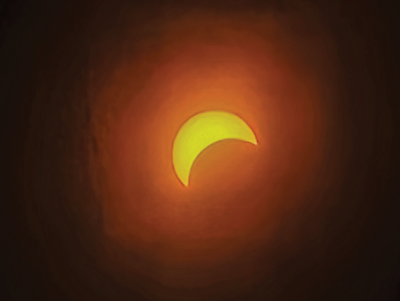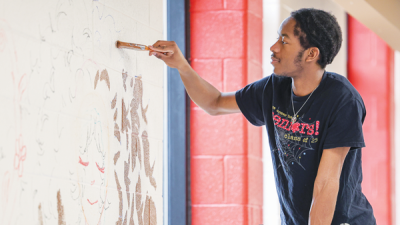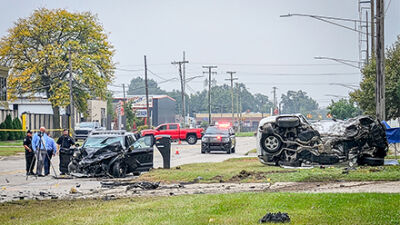CENTER LINE — Many Wolfe Middle School students couldn’t contain their excitement as they gathered outside on the afternoon of April 8 to view the near total solar eclipse.
With their safety glasses on, they headed outdoors at about 2:45 p.m. with their teachers to observe the historic moment. They saw the eclipse safely with special glasses science teacher Amber Baaso obtained through an education grant.
Last year, Baaso applied for a $600 grant through the Center Line Public Schools Educational Foundation to purchase the specialized glasses for the entire school.
“I knew this was happening and I wrote the grant last year,” Baaso said. “It’s memorable. It’s a big deal. It’s a good way to tie in learning to something real.”
As the students waited for the event, they took photos of the sky with their cellphones and shared them with Baaso and the other teachers. Several chairs were set up for students to sit on if they wanted while others stood or relaxed on the grass. Baaso and several other teachers kept a countdown.
“We’re almost there, guys. We got 10 minutes. It’s getting colder and darker,” Baaso said. “I peeked. The moon shadow is already casting over the sun.”
According to the website science.nasa.gov, a total solar eclipse happens when the moon passes between the sun and earth, completely blocking the face of the sun. The celestial event went through Mexico, the U.S. and Canada.
“The path of the eclipse went through Mexico, the United States in Texas, and traveled through Oklahoma, Arkansas, Missouri, Illinois, Kentucky, Indiana, Ohio, Pennsylvania, New York, Vermont, New Hampshire, and Maine,” the website states. “Small parts of Tennessee and Michigan will also experience the total solar eclipse.”
In metro Detroit, the eclipse occurred at approximately 3:15 p.m. For a short period of time, the temperature dropped several degrees and the sky turned dark when the sun was blocked.
“This is crazy,” seventh grader Inarah Dillon said. “It’s basically a moon shadow.”
“I’m excited for it. This is my first time seeing an eclipse,” seventh grader Dottie Pickens said. “I keep looking at it. It’s definitely getting colder and darker.”
Baaso, along with science teachers Chanel Maloney and Jaclyn Smith, had class discussions with the students prior to the eclipse.
“The students have come up with great questions asking why this is so special,” Baaso said.
Eighth grader Landon Cobb called the event “really cool.”
“I looked at it. It was an orange ball, but it was covered up. It’s once in a lifetime. It gives you a great view of life,” he said. “It’s really special to be part of it. I appreciate being able to participate.”
The students had to have permission slips signed by their parents or guardians to view the eclipse. The next total solar eclipse in the contiguous United States is set to happen in 2044.
The Center Line Public Schools Educational Foundation distributes grants during the school year to teachers for supplies and educational materials not available in the general budget.
 Publication select ▼
Publication select ▼
























